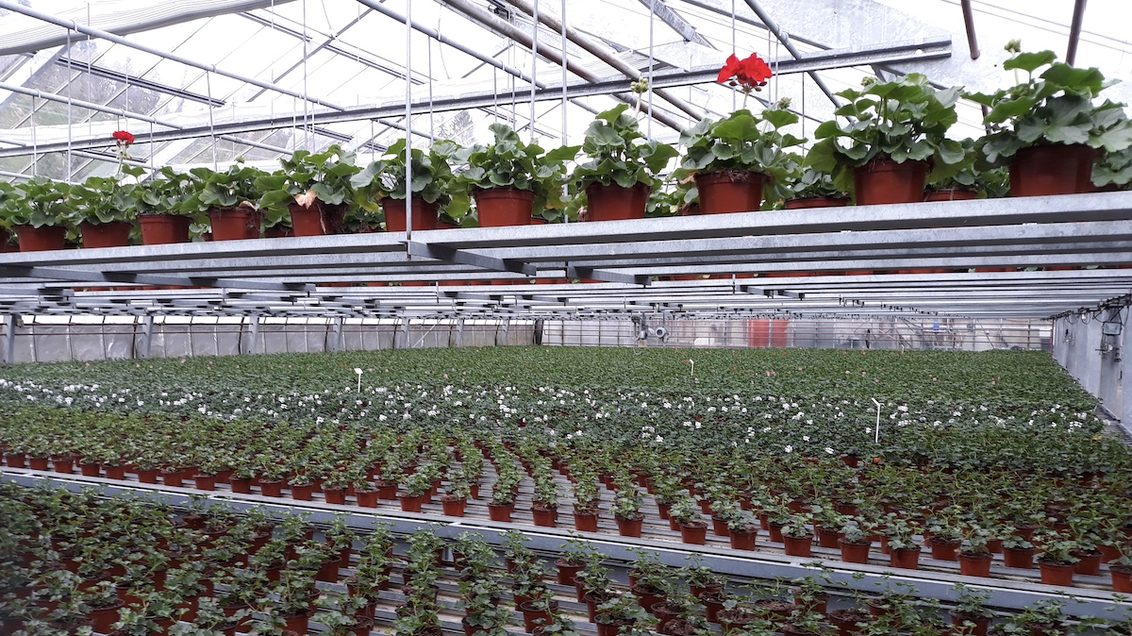Nozzle choice for ornamentals
Does Syngenta offer any nozzles suitable for my crops?

Much of the written advice on nozzle selection is based on spraying a flat, uniform cereal field. We all know our crops aren’t like that.
For ornamental plants the shape and size of each species, how the leaves are spaced and even their texture – the overall ‘plant architecture’ – is the key consideration. Are we talking clematis or hebe? Primula or poinsettia? We also need to take location into account (indoors or out, do we need to avoid drift onto neighbouring blocks of a different crop) and target (some pests are particularly adept at hiding under leaves or deep within crop canopies).
For example, climbers and other tall or ‘spikey’ subjects, such as ornamental grasses, phormium and the like, are difficult to spray from directly overhead because they present a small target area. Setting the nozzles to angle the spray increases the chances of it hitting the mark.
It’s impossible in a blog like this to offer specific advice on nozzle selection for any particular job. But I’ve been catching up with my colleague Alan Cochran, an applications specialist at our Jealott’s Hill research station, to hear whether any of the nozzles Syngenta has come up with for other crops or situations, particularly in field vegetables, might be worth thinking about for certain uses in ornamentals.
Potato nozzle: Designed to push the spray between the leaf layers of a potato plant, this flat-fan nozzle delivers at a 35o angle from a horizontal boom. It might have a place in shrubs and herbaceous crops with similarly ‘layered’ canopies.
Defy 3D nozzle: An angled, flat-fan nozzle with a similar action to the potato nozzle but with improved drift reduction characteristics. It’s designed to be used on a boom, in pairs angled forward and backward.
Vegetable nozzle: A highly ‘directed’ narrow flat-fan nozzle, introduced initially for carrot growers, which generates a relatively high-velocity spray to penetrate well into the canopy and down to the base of the plant when applied from above. As Alan points out, droplets bouncing off the leaf is a risk with high-velocity sprays but use of an adjuvant such as Elasto 5G will counter that and help you get the best from the nozzle.
Guardian Air: Originally developed by Syngenta in collaboration with nozzle manufacturer Hypro as the Amistar nozzle and has been a grower ‘go-to’ nozzle for nearly 20 years. It is a smaller droplet sized air-induction nozzle that still produces large numbers of larger slow-moving potentially air filled droplets. Used with Elasto 5G, it could have a role on crops where spray retention may be an issue, such as those with waxy leaves.

Nozzles on trial
We have compared the Guardian Air air-induction nozzle and the Defy 3D angled spray nozzle (alternating forwards and backwards) on a tractor-mounted boom over a crop of container-grown clematis at a nursery in East Anglia. We wanted to find out whether the heavier, less penetrative but less ‘bouncy’ droplets of the former or the smaller higher-energy droplets of the latter offered any clues as to how to tackle this crop which is so awkward to spray.
Although there was little overall difference when we analysed the leaf deposits, we found the higher-energy spray from the angled Defy 3D nozzles gave the best deposition on the lower parts of the plant. The application angle was likely playing a key role here.
Not everyone has access to a boom sprayer so in a second trial we compared coverage from the Guardian Air with that from a plain fan jet on the end of a hand-held spray wand on a hebe crop in a greenhouse. The air nozzle appeared to have had a slight advantage in terms of drift onto neighbouring beds, though it had a bigger reach with the larger droplets it produces carried further at the end of each sweep.
A word about booms
Using a boom is key to taking advantage of the different attributes of various nozzles. That’s not always easy in a nursery setting where greenhouse stanchions, irrigation risers and so on can get in the way. Some excellent mini-booms are now available for hand-held sprayers that will help increase the evenness of applications and reduce the time they take. More growers are also designing their own small, wheeled boom sprayers.
You might be able to use such booms vertically, or at least angled from the horizontal, to improve coverage on taller crops, or fit them with a multi-head attachment to allow you to switch easily between different nozzles ‘on the fly’ – assuming you’ve already calibrated them, of course.
My final blog in this short series addresses the questions of nozzle wear and what you can do to maintain and prolong nozzle life.

